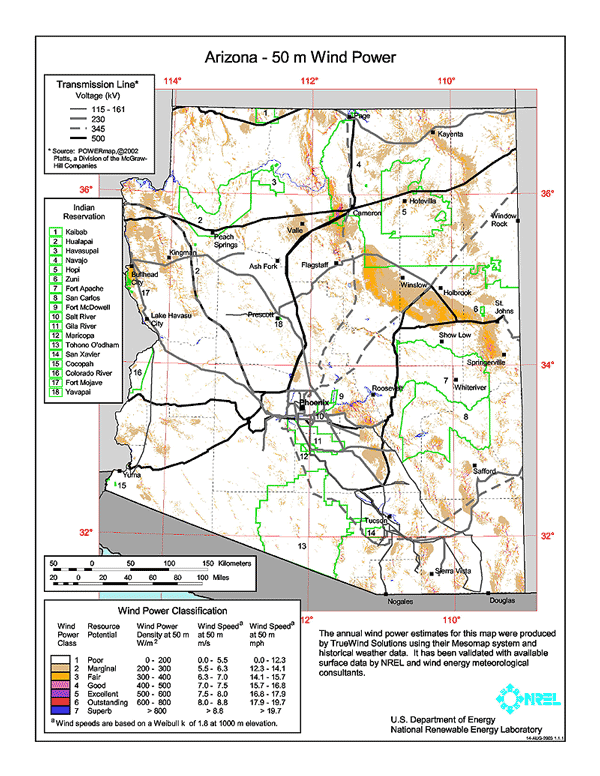Wind energy is fast becoming a popular source of renewable energy. We’ve all seen wind turn the blades of windmill, but how can wind generate electricity? Wind turns the blades the same way that steam turns the blades of a turbine in a traditional engine. Electricity is generated when wind rotates a turbine, as seen on a small scale in windmills. Best of all, this electricity is clean, producing no emissions or other pollutants that have been attributed to climate change. As generating costs continue to fall and as public concern about climate change escalates, the world is fast turning to wind for its electricity.
World wind electric generating capacity climbed 37 percent, from 17,500 MW in 2000 to 24,000 MW in 2001. In the United States alone, there is approximately 10,000 MW of installed wind capacity. One MW of wind generating capacity typically will satisfy the electricity needs of 350 households, or roughly 1,000 people.
In term of generation capacity, Germany and the United States, which launched the modern wind power industry back in the 1980s, lead the world in wind generation. Spain comes in in second place, followed by Denmark.
Despite this spectacular growth, development of the earth’s wind resources has barely begun. In densely populated Europe, for example, there is enough easily accessible offshore wind energy to meet all of the region’s electricity needs. In the United States, the wind-rich Great Plains states have enough potential wind energy to meet the entire nation’s electricity needs. However, infrastructure must be built to both harness the energy and transmit it where it needs to go.
In the last 15 years, the cost of wind-generated electricity at prime winds sites has fallen dramatically, from $.35/kWh in the mid-1980s to $.04/kWh today. Not only are costs already low and falling, but with wind-generated electricity there are not abrupt price hikes, as with other fuels. Wind is a widely dispersed, inexhaustible source of energy that has the potential to generate more electricity than society can use.
Even more impressive than the on-going growth in generating capacity are the plans for future growth. The European Wind Energy Association has recently revised its 2010 wind capacity projections from 40,000 MW to 60,000 MW.
*Data Source: The Earth Policy Institute www.earth-policy.org

For more information on wind energy please follow these links:
SRP Wind Energy Links
http://www.srpnet.com/environment/renewable.aspx#wind
